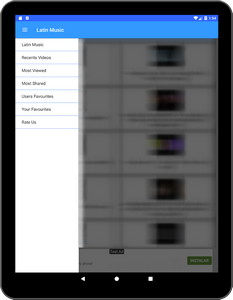

- #NAVIONICS ANDROID APP REVIEW 2016 SERIAL#
- #NAVIONICS ANDROID APP REVIEW 2016 UPDATE#
- #NAVIONICS ANDROID APP REVIEW 2016 FULL#
- #NAVIONICS ANDROID APP REVIEW 2016 CODE#
Apps are now being written to accommodate any data type and display it in digital, analog, line or bar chart display. Still in it's infancy, Signal K is starting to receive more support from hardware manufacturers, app developers and programmers. If your marine instruments are the older NMEA 0183, Digital Yacht makes an adapter cable to convert the data to USB for about $55 on. A Google search found several companies offering them from $169 to $189. If your onboard instruments are NMEA 2000, the Actisense NGT-1 can connect to your 2000 network and convert the data to USB. Actisense is one company that produces these devices. Getting the NMEA 2000 or 0183 data to your Raspberry Pi can be achieved by using a signal converter which plugs into the Pi's USB connection. The Raspberry Pi will then wirelessly provide the Signal K marine data to any mobile device over WiFi.
#NAVIONICS ANDROID APP REVIEW 2016 FULL#
The full installation instructions for the software can be located on the Signal K site. The Raspberry Pi 3.0 board can be purchased for about $35 on Amazon.
#NAVIONICS ANDROID APP REVIEW 2016 CODE#
The Signal K code can be easily run on a Raspberry Pi server also. This was well received by the many "early adopter" marine electronic enthusiasts and Digital Yacht has since produced the device for sale. Signal K received a big boost when Digital Yacht launched a KickStarter project for a Signal K device called iKommunicate. The project members develop and supply the software code to anyone wanting to use it or help develop it further. The Signal K revolution was started as an open source project by several marine boating enthusiasts back in about 2014 as far as I can tell. Suddenly the need for this NMEA data had exploded and boaters with mobile devices were hungry for access to it. The creation of the Internet, mobile devices and especially the iPhone in 2007 along with the development of marine apps created the next revolution in the marine industry.
#NAVIONICS ANDROID APP REVIEW 2016 UPDATE#
The NMEA 2000 format has worked well and was a much welcome update to the older NMEA 0183 standard.

The NMEA 2000 format allowed for greater bandwith, additional data types, standard connectivity and a faster network style format. It was intended to facilitate interconnection and interchangeability of the new digital marine electronics.

It was developed cooperatively by over 40 manufacturers and organizations including the US Coast Guard. NMEA 2000 had been in development since about 1994. The NMEA 0183 was finally updated with the NMEA 2000 protocol in about 2005. As modern electronics and chart plotters began to develop manufactures realized it had many data and bandwith limitations.
#NAVIONICS ANDROID APP REVIEW 2016 SERIAL#
NMEA 0183 is a serial protocol that defines how data is transmitted from one device to another. The National Marine Electronics Association (NMEA) 0183 standard was developed in the early 1980s in an effort to provide a standard protocol for marine electronic device communications. The compatibility of marine electronics was very limited years ago due to the many proprietary protocols of each company. A whole new world of possibilities has been made available by converting data from a closed standard proprietary NMEA format to open Signal K standard. This is truly an open format available for anyone to contribute to and help develop. Signal K is based on web communications and display technologies which makes it available to anyone who wants to build systems to use and display marine data. Signal K is new modern open source data format for use with marine electronics.


 0 kommentar(er)
0 kommentar(er)
